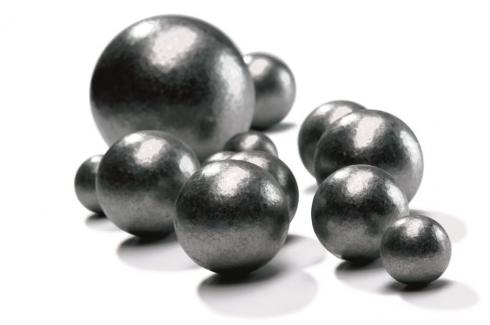The intensity of many technological processes depends on the surface size of the processed solid materials; while increasing their surface by reducing the size of the pieces increases the speed of the process, and also increases the yield and improves the quality of the final product. The process of reducing the size of pieces of solid materials is called crushing or grinding; often, crushing refers to the reduction of only large pieces. The process of grinding small pieces is called grinding.
Fuel, raw materials (rocks, ores), semi-finished products and finished products are subjected to grinding.
Grinding is called large if pieces are processed with a transverse size from 1000 to 200 mm, medium and intermediate – from 250 to 50 mm, small from 50 to 20 mm and thin (grinding) – from 25 to 3 mm and less. Grinding is dry or wet; in the latter case, a certain amount of water is added to the starting material. When crushing and grinding, a lot of mechanical energy is consumed, and therefore it is important to choose the grinding media correctly.
In most cases, a combined effect of grinding forces occurs, for example crushing with abrasion, impact with crushing and abrasion; sometimes side-bending and tearing join the main effort. The grinding method is chosen to take into account the physical properties of the crushed material, primarily its hardness and the nature of the fracture. For materials with high hardness, impact and crushing are more effective; for viscous materials, abrasion is preferable; for brittle materials, splitting is preferable. One of the most significant factors characterizing the grinding process is energy consumption. These costs are all the more, the greater the strength of this material.
Power consumption.
There are two hypotheses for determining the value of useful work in crushing processes. According to the first hypothesis, the work necessary for crushing is proportional to the surface of the crushed material, newly formed during crushing. Imagine that a piece of material in the form of a cube with an edge And cm is crushed under the action of crushing forces on surfaces parallel to its faces.
It is easy to show that between the degree of grinding, the number of decay planes and the number of new cubes obtained, there is a certain dependence, namely, when the degree of grinding n, the number of decay planes is 3 (n-1), and the number of cubes is n8; while the dimensions of the decay plane remain equal to the face area of the original cube.
On the basis of crushing theories, it is possible to outline the correct organization of grinding processes.
The basic principles of grinding. Classification of machines.
When grinding materials, you must follow the basic rule: do not grind anything superfluous. The following provisions follow from this rule:
-The grinding of any material should be carried out only to the degree of grinding that is required for its further processing or use; material particles, crushed to the required size, must immediately be removed from the machine; the grinding process must be preceded by a screening process (screening).
-If possible, grinding should be “free”, that is, it should not be complicated by side processes; only overcoming the adhesion forces between the particles of the crushed material is the useful work spent on grinding.
-With a large degree of grinding, the process should be conducted in several stages.
Regardless of the nature of the grinding forces, the degree of grinding, and the properties of the starting materials, the following general requirements are imposed on all grinding machines:
-uniformity of size of pieces of crushed material;
-immediate removal of crushed pieces from the workspace;
-smallest dust formation;
-continuous and automatic unloading;
-the ability to control the degree of grinding;
-the ability to easily change quickly wearing parts;
-low energy consumption per unit of output.
All grinding machines can be classified according to the degree of grinding and the nature of the grinding forces. The simplest and most common is the classification according to the degree of grinding, according to which all grinding machines are combined into three groups:
-machines for large (preliminary) crushing;
-machines for medium and fine crushing;
-machines for fine grinding (grinding).




